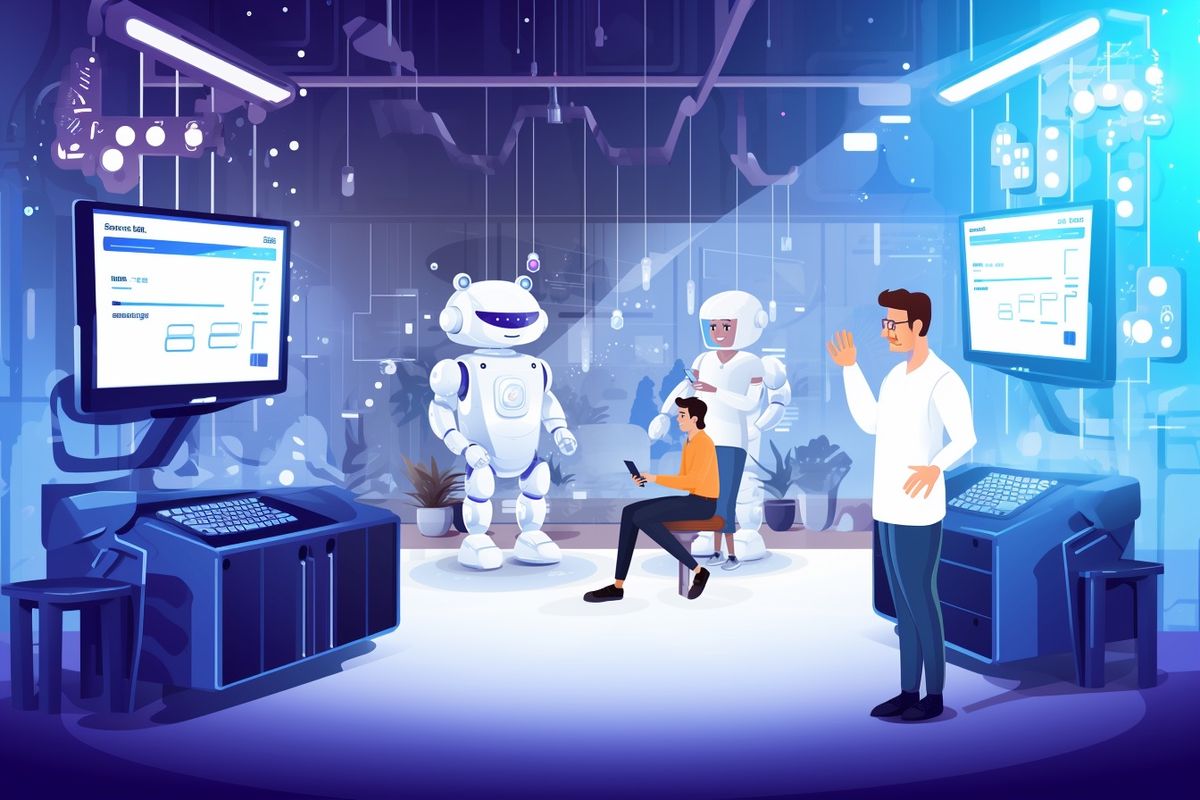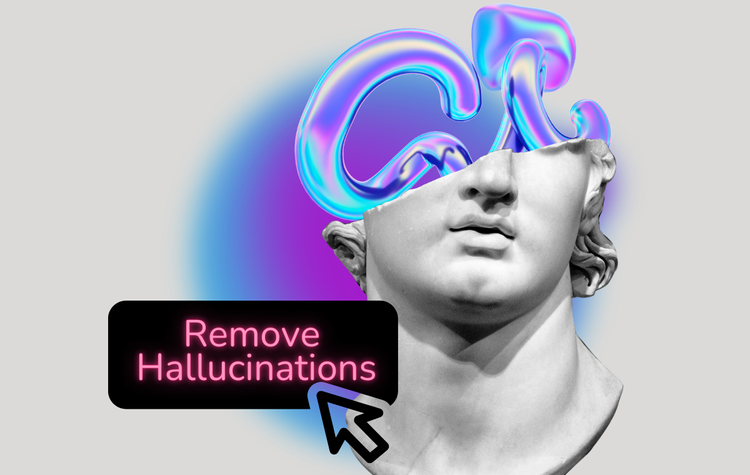5 Ways Corporate Chatbots Benefit Employees
Companies are rapidly adopting internal chatbots. These tools aid employees in diverse tasks, from data retrieval to onboarding, and ensure a more efficient, productive work environment.

In today's dynamic business world, efficiency is critical. More and more businesses are embracing the internal chatbot revolution. Big brands like McKinsey & Company and Walmart are making the most of these chatbots for internal employees. At Gleen, our customers build internal company chatbots for their employees.
So, how can an employee chatbot make a difference in your enterprise?
What's a Corporate Chatbot?
Specific businesses build Corporate or Enterprise Chatbots to help internal employees accomplish tasks and access information. Typically, these chatterbots have access to internal company knowledge and must follow strict corporate security and compliance policies.
These bots use generative AI to answer employee questions conversationally. Think ChatGPT but trained on your company documents.
You can also call them HR chatbots or a chatbot for internal company employees. They tackle a variety of tasks and offer tailored advice. These are also easier to set up and maintain.
Why Deploy an Internal Chatbot in Companies?
Introducing AI-based intelligent company chatbots can lead to significant cost savings and smoother operations. They are functionally versatile and can personalize the conversations with each employee. These chatbots interact with users through a conversational interface or a messaging tool like Slack or Microsoft Teams. They can assist employees with many things. For example:
- They act as a virtual assistant.
- They can access data and present it in a conversational interface.
- They help new employees with quick onboarding.
- They provide information on time off.
- They facilitate shift swapping.
- They allow employees to view salary information.
- They can service employees across different countries in multiple languages.
Integrating these AI chatbots for internal employees with existing tools can be a game-changer for businesses.
Top 5 Uses for an Internal Chatbot:
Let's look at what some of the top companies are using these internal chatbots for inside their businesses:
Knowledge Bot:
Primarily used in corporate knowledge bases for Human Resources, Finance, and Legal, these bots act as reservoirs for corporate norms, processes, and best practices. They rapidly offer details on company regulations, benefits, and legal mandates, simplifying tasks for HR, legal, and finance departments.
Custom Content Bot:
Using AI solutions like Gleen.ai, these bots provide content tailored for specific organizational units. By combining information from various sources, especially the company content, they create customized materials, improving strategic planning and implementation.
Deployed in agent assist mode, custom content bots can be used to help customer service agents find content and create initial drafts of customer communications.
Onboarding Bot:
Streamlining the onboarding of new hires, these bots rapidly furnish personalized details, answer questions, detail processes, and assist with digital documentation. This simplifies the onboarding journey, hastening the onboarding of new employees.
Action Bot:
These bots, powered by platforms like Gleen, undertake specific actions such as scheduling or halting processes. Their ability to liaise with organizational APIs amplifies their value manifold.
Data Bot:
They present enterprise data in an easy-to-consume format. It makes getting insights easier to grasp and action. With real-time data retrieval and analysis, they assist in informed decision-making.
5 Considerations and Questions Before Implementing an Internal Chatbot
Starting with an internal chatbot needs careful planning. When deciding between a custom-built or ready-made solution, think about the following questions:
Consistency & Accuracy:
A major issue with generative AI is hallucination, where chatbots make up facts when there are none. The cost of hallucination can be high in a business setting. At Gleen AI, we think it's a deal breaker to AI adoption in enterprises.
Question to Ask: So when you build a chatbot for business, how can you guarantee a consistent answer for every employee? Put accuracy in the spotlight.
Role-Based Access:
Protecting sensitive data is paramount. You must protect data from outsiders and only allow authorized employees to access it. As enterprise chatbots are a new field, there could be potential vulnerabilities here.
Question to Ask: How will your bot distinguish access rights? Ponder over creating role-specific bot profiles.
Dynamic Retraining:
Launching a chatbot is just the starting point. Once it's live, you would need to feed it additional information to keep the answers fresh. Sometimes you would update an existing content and the bot needs to fetch the updated info.
Questions to Ask: As information evolves, how does your bot learn from the freshest data?
Analytics Insight:
Like any product, you need to consider your analytics needs from the company chatbot usage data. Ideally, you want to see both the quality and the quantity of engagement. Metrics for evaluating bots include number of queries, session length, response time, response accuracy, and bot helpfulness.
Effective solutions can provide valuable data to enhance content, understand employee sentiments, and more.
Questions to Ask: Ask for what metrics are available in the dashboard. Additionally, can it plugin into your existing HR analytics dashboard? You don't want five different dashboards to look at.
Iterative Feedback:
Messaging bots, no matter how smart won't be 100% accurate. So, you need a fallback plan if the bot gets an answer wrong.
Ideally, you can feed the right answer back to the bot, so it learns and doesn't make the same mistake again. In technical terms, experts refer to this as RLHF, which stands for Reinforcement Learning with Human Feedback
Questions to Ask: Can your bot assimilate feedback swiftly to avoid repeating the same errors?
Cost:
Finally, you would need to justify the ROI to the decision-makers. In both build vs. buy, you need to consider cost in terms of dollars and time.
If you are building it in-house, the additional cost to consider would be the ongoing maintenance. On the other hand, if you are considering buying it, you need to ask about the time to implement it.
Questions to Ask:
If building in-house:
- How long will it take to build?
- What is the cost to build?
- What are the ongoing maintenance costs?
If considering buying a third-party solution:
- Time to implement
- Setup costs
- Recurring cost to use the chatbot
If you are interested in learning more about what features to look for in a chatbot, here is a buying guide.
The Future of Chatbots at Work
We are at an inflection point where enterprises' use of AI for internal use cases will only accelerate. This will also lead to new exciting innovations. More specifically:
- Emerging Capabilities: Future chatbots might use voice and support multiple languages for a better experience.
- Vision for Intelligent Assistants: Chatbots could become more like all-around digital helpers, understanding and assisting employees daily.
- Chatbots as the Employee Experience Standard: They'll be critical in training, improving productivity, and supporting worker well-being.
- Implications for Workforce Productivity: Chatbots handle regular tasks so employees can focus on creative work.
Conclusion
Internal chatbots are here to stay and about to change how we work significantly. They'll become more common and helpful in our daily tasks. Companies that start using them now will benefit from efficiency and happier employees.
Create a free generative AI chatbot with Gleen AI or request a demo of Gleen AI.



